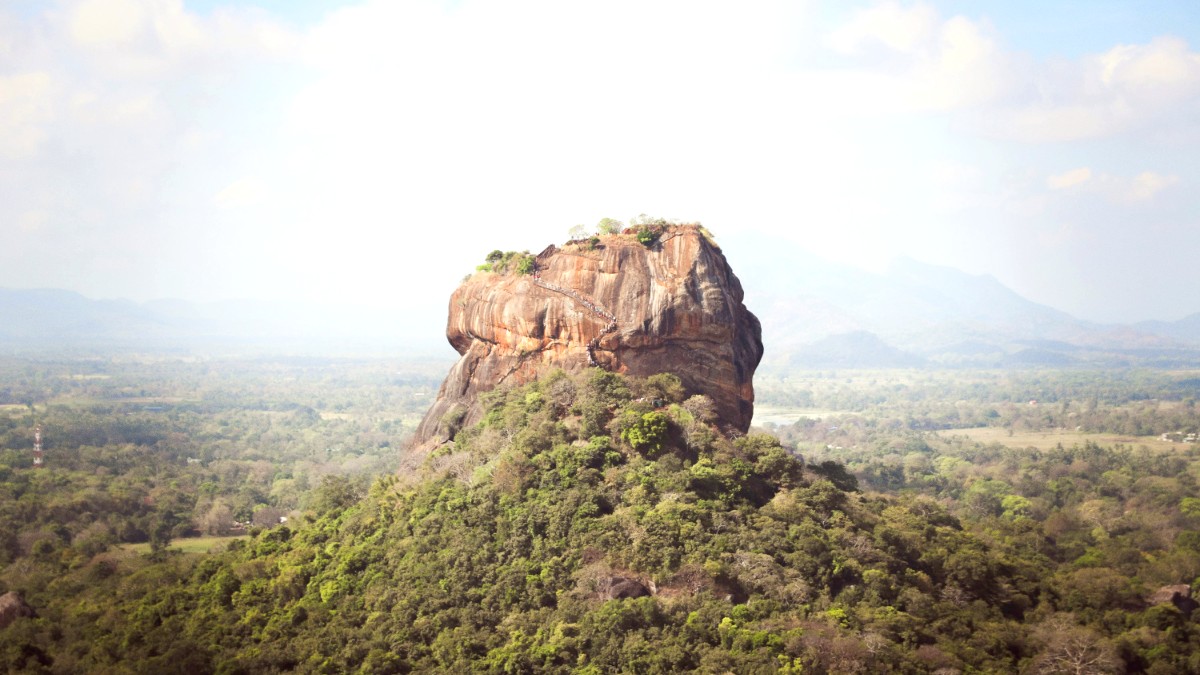
The Ancient Cities, Sri Lanka
Daily temperatures average 26°C to 32°C (79°F to 90°F). Nights are slightly cooler. The warmth is constant. Two monsoon seasons come to Sri Lanka. Sigiriya is mainly influenced by inter-monsoonal rains and the North-East monsoon. October to January: The North-East Monsoon brings rain. Sigiriya typically receives less rain than the east coast during this period. Showers can be sporadic. May to September: The South-West Monsoon mainly affects western and southern coasts. Sigiriya generally experiences drier weather. High humidity (70-90%) is common year-round. The air often feels thick and warm.
Afternoon thunderstorms can occur during inter-monsoonal periods (October-November, April-May). These are typically short but intense. Carry a Compact umbrella or Rain jacket during these months. The top of Sigiriya Rock has no shelter during rain. Climb Sigiriya Rock early morning (6:30 AM - 8:00 AM) or late afternoon (4:00 PM - 5:00 PM). This helps avoid intense heat and crowds. These times also give better light for photography. For wildlife viewing (e.g., Minneriya National Park), visit between July and October for the "Gathering" of elephants.
Most visitors require a visa or an Electronic Travel Authorization (ETA). Most nationalities need an ETA for short visits (up to 30 days, double entry). Obtain the ETA online before arrival. This is the most common option for tourists. The ETA functions as the tourist visa for many countries.
Apply online through the official ETA website of the Department of Immigration and Emigration of Sri Lanka. Use the official government site. An approval notice usually arrives via email within 24-48 hours. Print a copy of this notice to carry with you. Your passport must remain valid for at least six months from your arrival date. You need a confirmed return or onward air ticket. Show proof of funds to cover expenses. Passport photos are not typically required for online ETA, but carrying a few for unforeseen circumstances can be useful. The ETA fee for most nationalities is USD 50 for a tourist ETA (subject to change). No special permits are necessary for general tourism or visiting Sigiriya. No specific health-related entry requirements are generally in place for Sri Lanka; check for updates closer to your travel date.
Keep these accessible
Six months from arrival date.
Print a copy of your online ETA approval notice.
Be ready for checks
Confirmed onward or return ticket required.
Show proof to cover your stay.
Smooth process at airport
Proceed to immigration counter upon arrival.
Standard ETA covers all major attractions.
The local currency is the Sri Lankan Rupee (LKR). You can exchange major currencies like US Dollars (USD), Euros (EUR), and British Pounds (GBP) at banks, authorized money changers, and hotels. ATMs are widely available in towns and cities, including Dambulla, which is near Sigiriya. Most hotels and larger establishments accept credit cards. For local purchases, small eateries, and tuk-tuk fares, carrying smaller denominations of LKR is wise.
Tipping is appreciated but not always strictly necessary, especially in smaller, local establishments. Restaurants often add a 10% service charge; if not, a tip of 5-10% is welcome for good service. Small tips (LKR 100-200) for hotel porters or housekeepers are a kind gesture. For tuk-tuk drivers, a tip is not expected for short rides, but rounding up the fare is a common courtesy if service was good. Tour guides and drivers expect tips, especially for good service; a range of LKR 1,000-3,000 per day is customary, depending on service and duration.
LKR 4,500-10,000 / $15-33 USD
LKR 10,500-37,000 / $35-120 USD
LKR 27,500+ / $90+ USD
USD 30 (for foreign adults)
LKR 1,000 ($3-4 USD)
Sri Lanka is generally safe for tourists, but awareness and preparation remain helpful. Consult a travel doctor 4-6 weeks before your trip to discuss vaccinations.
Yellow Fever vaccination certificate is necessary if you arrive from or transit through a country with a risk of Yellow Fever transmission. Check the latest requirements from official health organizations.
Diarrhea/Traveler's Diarrhea: Drink only Bottled water or purified water. Avoid ice unless from purified source. Eat cooked food, preferably hot. Wash hands frequently or use Hand sanitizer.
Maintain a list of emergency contacts. This list should include your local embassy or consulate in Colombo, your travel insurance provider's 24-hour assistance number, and family or friends back home.
This section summarizes budget and health considerations for your trip to Sigiriya.
Sri Lankan Rupee (LKR) is the local currency. Exchange major currencies at banks or hotels. ATMs are widely available. Credit cards are accepted at larger establishments, but cash is king for local purchases and small vendors.
Daily expenses vary by travel style. Sigiriya's USD 30 entrance fee for foreign adults is an outstanding single cost. Tipping is appreciated for good service, with 5-10% in restaurants (if no service charge), and LKR 100-200 for hotel staff. Tour guides and drivers usually receive LKR 1,000-3,000 per day.
Most visitors need an ETA (Electronic Travel Authorization) for short stays, obtainable online. Ensure your passport is valid for six months from arrival.
ETA is the standard for tourists.
Do not arrive without pre-approved entry.
Consult a doctor for recommended vaccinations (Hepatitis A, Typhoid) and Yellow Fever if transiting through at-risk countries. Drink only bottled water. Use insect repellent.
Stay hydrated and use sun protection.
Avoid tap water and unpeeled fruits.
Sri Lanka is generally safe. Be aware of petty theft in crowded areas. Negotiate fares with tuk-tuk drivers. Dress modestly, especially for women, and avoid isolated areas at night.
Keep emergency contacts handy.
Do not engage with unsolicited touts.
| Category | Budget Traveler | Mid-Range Traveler |
|---|---|---|
| Accommodation | LKR 2,000-5,000 / $6-16 | LKR 5,000-15,000 / $16-49 |
| Meals | LKR 1,000-2,500 / $3-8 | LKR 2,500-6,000 / $8-20 |
| Local Transport | LKR 500-1,500 / $1.5-5 | LKR 1,500-4,000 / $5-13 |